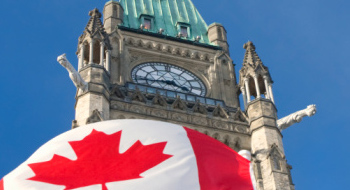

Ottawa should issue more real-return bonds (RRBs) to satisfy investor demand and lower its borrowing costs, according to a report released today by the C.D. Howe Institute.
“For individual savers and financial intermediaries such as pension funds, these bonds offer uniquely valuable protection against inflation. And for Ottawa, issuing more RRBs could lower debt-service costs—not just because of their typically lower yield, but also because more RRBs would underline the government’s commitment to low inflation,” argues William B.P. Robson, president and CEO of the Institute and co-author of the report with Philipple Bergevin.
The authors contend that issuing more bonds to meet investor demand would be good for Canadian taxpayers, as well as helping individual savers and financial intermediaries who save on their behalf.
The report explores the potential impact of a larger RRB issue over the next five years than Ottawa currently plans. The authors suggest annual issues of $7.2 billion worth of bonds, well above the $2.4 billion currently planned by the government. Robson and Bergevin also recommend that two-thirds of a larger RRB issue would have 10-year maturities rather than the 30-year maturities exclusively issued to date.
The report offers estimated net interest savings on federal debt as a result of the greater bond issue of $200 million in 2016/17 and $500 million over the period until then. It also presents a number of ways the federal government can ensure that this higher RRB issue does not hurt the depth and liquidity of the market for its nominal debt.
“Issuing more RRBs would not only better satisfy existing demand from investors, it has the potential to spur the development of other inflation-indexed instruments,” comments Bergevin.
